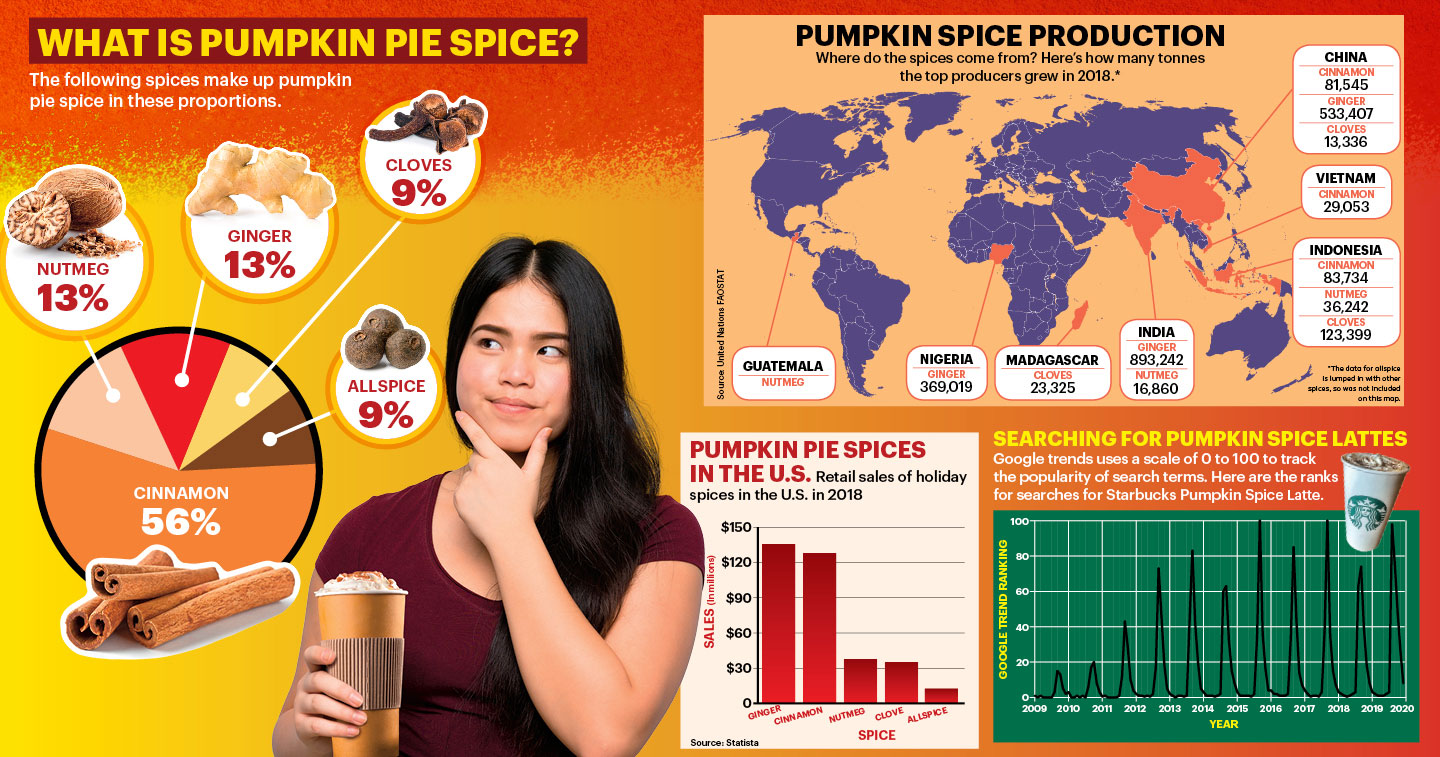Love it or hate it, pumpkin spice-flavored products start flooding store shelves every fall. The iconic Starbucks latte was invented in 2003 and makes more than $500 million every year—but it doesn’t end there. Pumpkin spice is everywhere: in cookies, candles, household cleansers, and more. There’s even pumpkin-spiced SPAM! The number of pumpkin spice-flavored products has grown by more than 80 percent since 2011. But what makes the combination of cinnamon, ginger, nutmeg, allspice, and cloves so popular?
“When you eat or drink something, your mind takes you back to the last time you had that flavor,” says food scientist Kantha Shelke. If you’ve had pumpkin pie at a happy time with your family, every time you taste pumpkin spice, you’ll be reminded of that time. “It’s really our brain, not our tongue or our nose, that tells us what a flavor is,” she adds.
But the spices play an important role too! “Something about the way cinnamon, ginger, and cloves combine creates a sense of satisfaction that is unique,” Shelke says. Some cultures in the Middle East and India use variations of the spice mix in their cooking too—they just don’t call it pumpkin spice!
People have been using “pumpkin spice” since ancient times, explains Shelke. “Residues of the spice mix have been found on ceramic pottery shards estimated to be 3,500 years old in one of the Banda Islands in Indonesia.”


